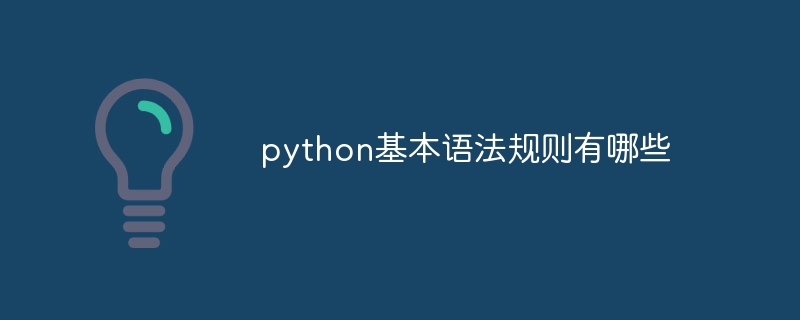Home >Backend Development >Python Tutorial >What are the basic grammar rules of python
What are the basic grammar rules of python
- 下次还敢Original
- 2024-04-20 21:55:281172browse
The basic syntax rules of Python include: Use indentation to define blocks of code. Use variables to store data and assign values using the = assignment operator. Supports multiple data types such as numbers, strings, and lists. Arithmetic, relational, logical, and assignment operators are provided. Use control flow statements (such as if, for, while) to control the order of execution. Use functions and classes/objects to modularize code.

Python Basic Grammar Rules
As a programming language, Python has clear grammar rules. These rules define Understand the structure and meaning of code writing.
Indentation and Block Structure
Python uses indentation to define blocks of code. Indentation must use space characters, not tab characters. Blocks are contained in groups of statements with the same indentation.
Variables
- Variables store data values.
- Variable names start with a letter or underscore, followed by letters, numbers, or underscores.
- Variables are assigned values through the assignment operator
=.
Data Types
Python supports a variety of data types, including numbers (integers and floating point numbers), strings, tuples, lists, dictionaries, and Boolean value.
Data structure
- List: An ordered mutable collection.
- Tuple: An ordered immutable collection.
- Dictionary: A collection of key-value pairs, the key is unique.
Operators
Python provides a variety of operators, including arithmetic operators (, -, *, /), relational operators (==, !=, >, <), logical operators (and, or, not) and assignment operator (=).
Control flow
Control flow statements control the order of program execution. The main statements include:
- #if statement: Conditional execution.
- for loop: Traverse the sequence.
- while loop: Loops through code until the condition is false.
Functions
Functions are reusable blocks of code that perform a specific task using given parameters.
Classes and Objects
Python supports object-oriented programming and uses classes and objects to encapsulate data and behavior.
The above is a summary of Python’s basic syntax rules. Following these rules ensures that your code is readable, maintainable, and executable.
The above is the detailed content of What are the basic grammar rules of python. For more information, please follow other related articles on the PHP Chinese website!

